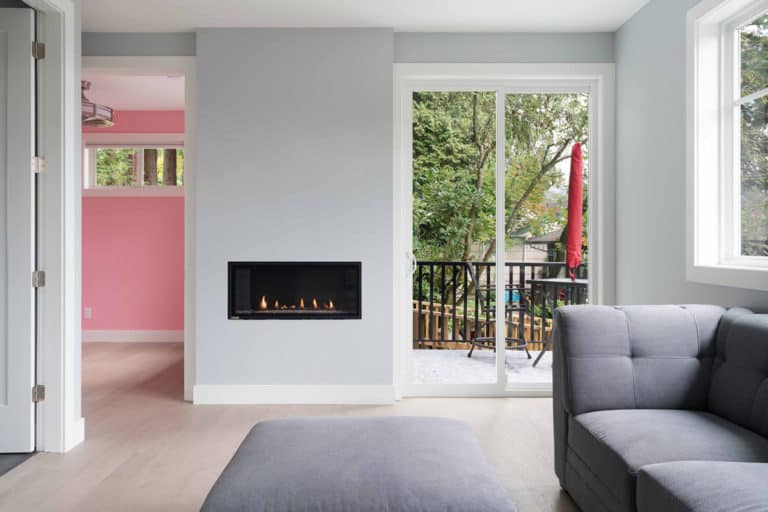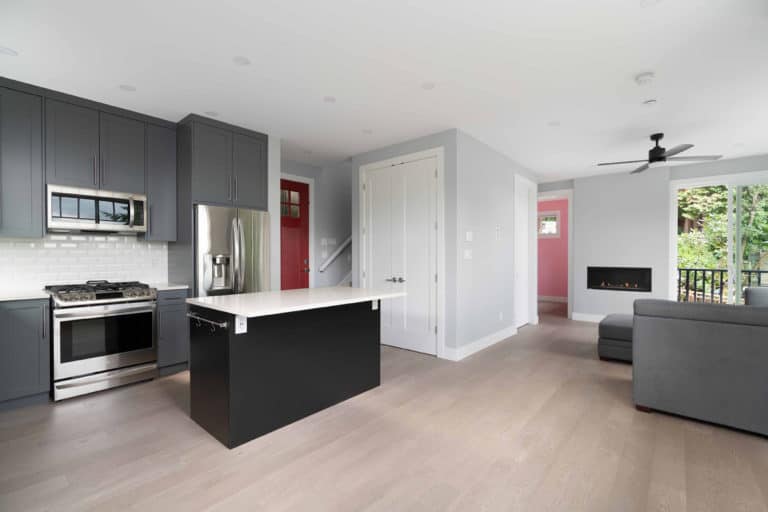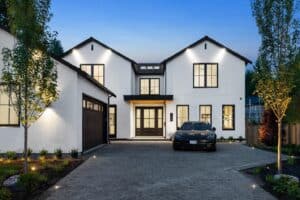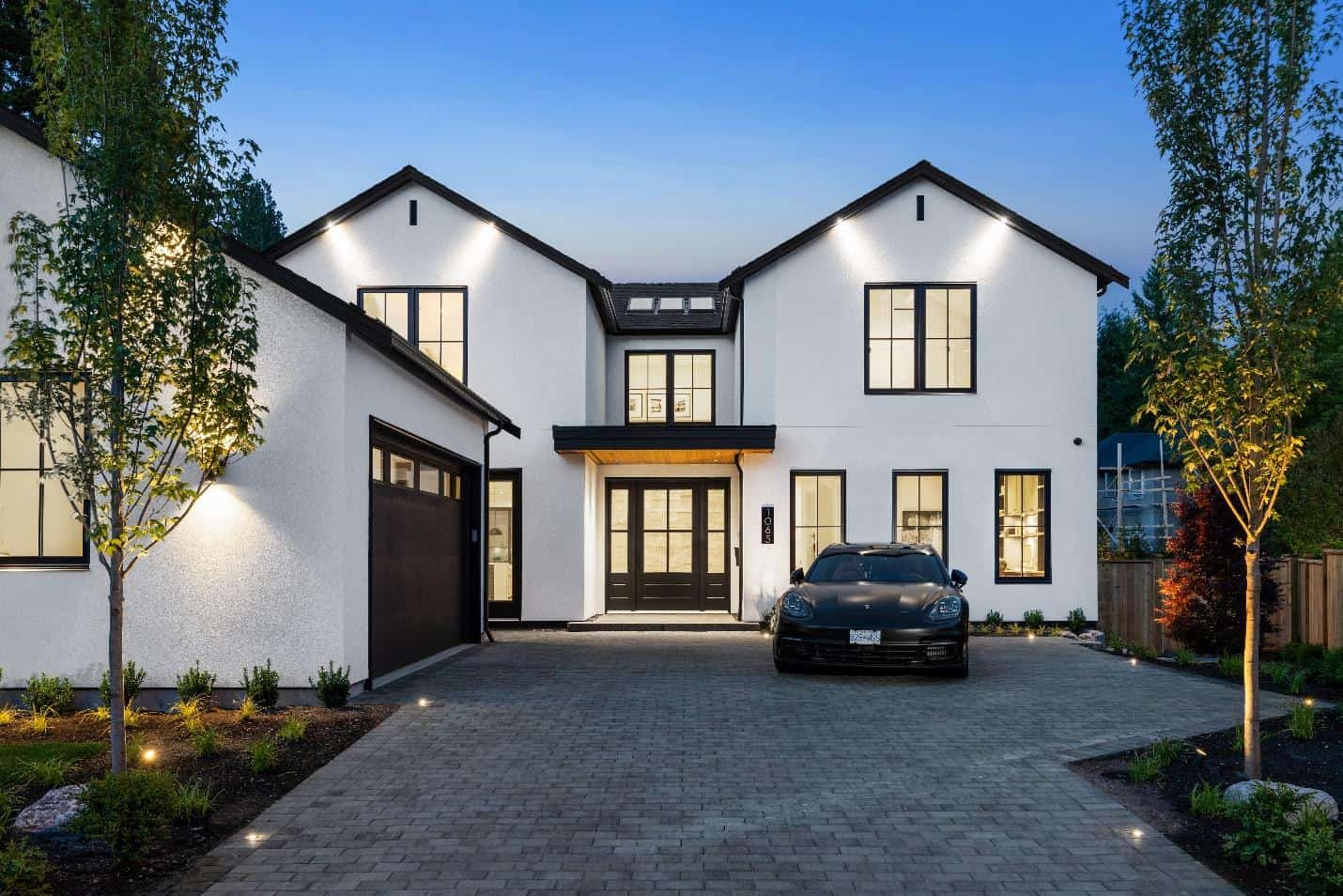With the way real estate prices look in the Lower Mainland, it’s no surprise laneway houses have entered the mainstream. In fact, new Vancouver homes are being constructed that include laneway housing from the very beginning because the demand for this kind of housing is growing.
Laneway houses in Vancouver are encouraged by government policies, particularly in places like the North Shore, where additional rentals are needed – a main reason they have become increasingly common in the last 10 years.
Though contributing to the Lower Mainland’s rental housing stock is a wonderful reason to add a lane house to your Vancouver property, it isn’t the only reason to consider doing so.
If you’ve been going back and forth on whether or not to add one to your property or if this is the first time you’ve ever really considered it, we’ll take you through everything you need to know about them.
Contents
What is a Laneway House?
Also known as a coach house, a laneway house is a detached, compact home that is built on the same lot as your existing single family home. They can be one or two levels and will usually contain 2-3 bedrooms, 2 bathrooms, a kitchen and living room.
This small, independent home usually faces the road, or laneway, running behind the primary property – typically taking up the space where a garage would be.
Laneway homes in Vancouver can be sold independently depending on the area. In the North Shore they cannot be sold separately from the main house or placed under a strata title, while in other areas, it’s perfectly fine to do so.
It’s not acceptable to just throw anything up on a single-family lot. A laneway house must adhere to some general principles. In particular, it must:
- Be smaller than the main house on the lot.
- Provide an alternative form of rental housing that is livable and above grade (not in the basement) in single family zones.
- Use design features to enhance and complement the neighborhood’s character as well as respect neighboring properties.
- Offer sufficient onsite parking.
- Improve and enhance any adjacent lane’s frontage.
- Respect the existing trees, landscape features and natural environment.
- Display green building practices and high quality design that reduce greenhouse gas emissions generated by buildings and improve energy efficiency.
What are the Benefits of a Laneway House?

There are a number of reasons why homeowners decide to add a laneway house to their property. You already know that laneway homes must benefit the neighborhood, the environment, the city and the tenants who are living in the house, but what benefits do you get from building one?
Extra Income
The District of North Vancouver, as well as many others in need of housing, backed the construction of laneway houses in order to provide more affordable living accommodations in densely populated areas. This increased the housing stock in the area.
Lane houses have proven to be valuable for both property owners and incoming families because of the shortage of starter homes in single-family areas. Rent for laneway housing for a 1-bedroom can range between $1300 and $1700.
Guest Suite
When you are expecting out of town guests, a coach house makes for the perfect guest house. Friends and family will not have to pay high hotel rates but they will also have their own space.
Whether family or friends, everyone loves visitors, but we all like when they go home, too.
A laneway house allows for a lot of space and privacy. There’s nothing worse than feeling like you must be on your best behavior in your own home, or guests feeling as if they cannot be themselves either.
Suite for Live-In Assistance
Life is easier when the nanny, chef or in-laws, nurse or personal help of any kind lives very close. If you are assisted by people daily, it makes sense that your lives are pretty intertwined.
Why not provide a living space for them that makes their lives easier as they work to do the same for you?
Bring the Family Closer Together
Your children love you, they just don’t’ want you walking into their room unannounced or have to hear you complain that their music is too loud.
One of the most common reasons homeowners consider laneway housing is to house older children who are ready to live independently, but want to remain close to home. They are able to feel a sense of freedom, privacy and responsibility as they step into the world.
The same is true of any of your close family members. If you want your parents to live close by as their age progresses, help out a sibling if they’ve encountered rough times or simply see your loved ones whenever you want, a laneway house will suit you well.
Downsize
Who says you can’t live in your own laneway house and let people move into the large home you’re no longer interested in occupying?
This is a common reason people decide to build this kind of accommodation. After the children have left, there’s often no reason to maintain a large space. It is time consuming and takes a lot of energy to keep things clean and running properly.
Even if you just are ready for something different, there’s no right or wrong reason to want smaller living accommodations, and coach houses offer that.
Add Value to Your Existing Property
If you’re not convinced by the financial advantage of rental income, the additional living space a coach house adds is a great way to increase your property’s value and boost the asking price when it’s time to make a sale
Although there are significant upfront costs, you can finance construction with the help of financial institutions that have noticed the growing trend of laneway housing. Special mortgage packages can be found that feature appraisal services and over $700 in closing costs, such as the one from Vancity.
Can Anyone Add a Laneway House to Their Property?
Depending on the area you live in, you may or may not be able to build a laneway home.
It’s important to note that changes to housing policies occur often so keep current with the local government.
In the City of Vancouver if you want to build a laneway house, your lot must have lane access as well as fire fighter access. There are also strict measurements that must be adhered to regarding distance between the suite and main home and width.
The City of North Vancouver requires that owners reside on the lot, but homeowners are allowed to build both attached and detached units and lane access isn’t required. There are however, important width and space guidelines that must be followed.
Constructing a coach house in the District of North Vancouver is possible if there is no secondary suite of any kind. Building in this area also requires meeting the area’s other policies and regulations like those regarding lot size and density availability.
The District of West Vancouver has rules for the building of coach homes in the area that can seem lax compared to the others, but they must strictly be complied with nonetheless.
Building a Laneway House – The Process
Once you decide that a laneway home is the right choice for you, the work begins. You’ll need to know if your property is eligible, how much it will cost and much more.
This step by step breakdown will give you an idea of how to approach this large project.

Phase I: Consultation
Two factors that must be considered before proceeding with the building of a laneway house are site eligibility and cost. Determining if your building site meets eligibility requirements is complex, and is best done by a professional. After an on-site consultation with Goldcon Construction, you will know if it’s possible to legally build on your property.
Once the property’s eligibility has been determined, we will figure out the cost and feasibility of your project. There is a lot that can drive up the cost of developing a new structure such as construction costs, site servicing, and application fees, to name a few.
Though typical construction costs of laneway houses in Vancouver ranges from $300,000 – $400,000, our professionals will make sure you have the right expectations and a firm understanding of any risks.
Phase II: Design
After determining a lane house is feasible, you’ll begin to discuss how to start designing the architecture and interior of your new home. This phase includes a few different steps.
- Consulting with Neighbors
- Building Plans
- Design Development
- Planning Review Meeting
Phase III: Permit Application & Approvals
The application process varies within the area of Vancouver you reside in but they can take up to 14 weeks from the date an application is submitted.
Following the evaluation process, you will be notified if your application was approved, deferred or rejected.
Phase IV: Construction
Upon an approved building permit, construction can commence. Applicants must comply with the British Columbia Building Code and get approval for site services from the Engineering Department.
Let’s Get You Started
If it’s time for you to get the process for your new laneway home underway, there may be a lot to do, but remember it will all be worth it.
With over 25 years of experience, Goldcon Construction has an undeniable track record of excellence. Schedule a free consultation with us to take advantage of all that a laneway house can offer. This is one housing trend homeowners don’t want to miss out on.








